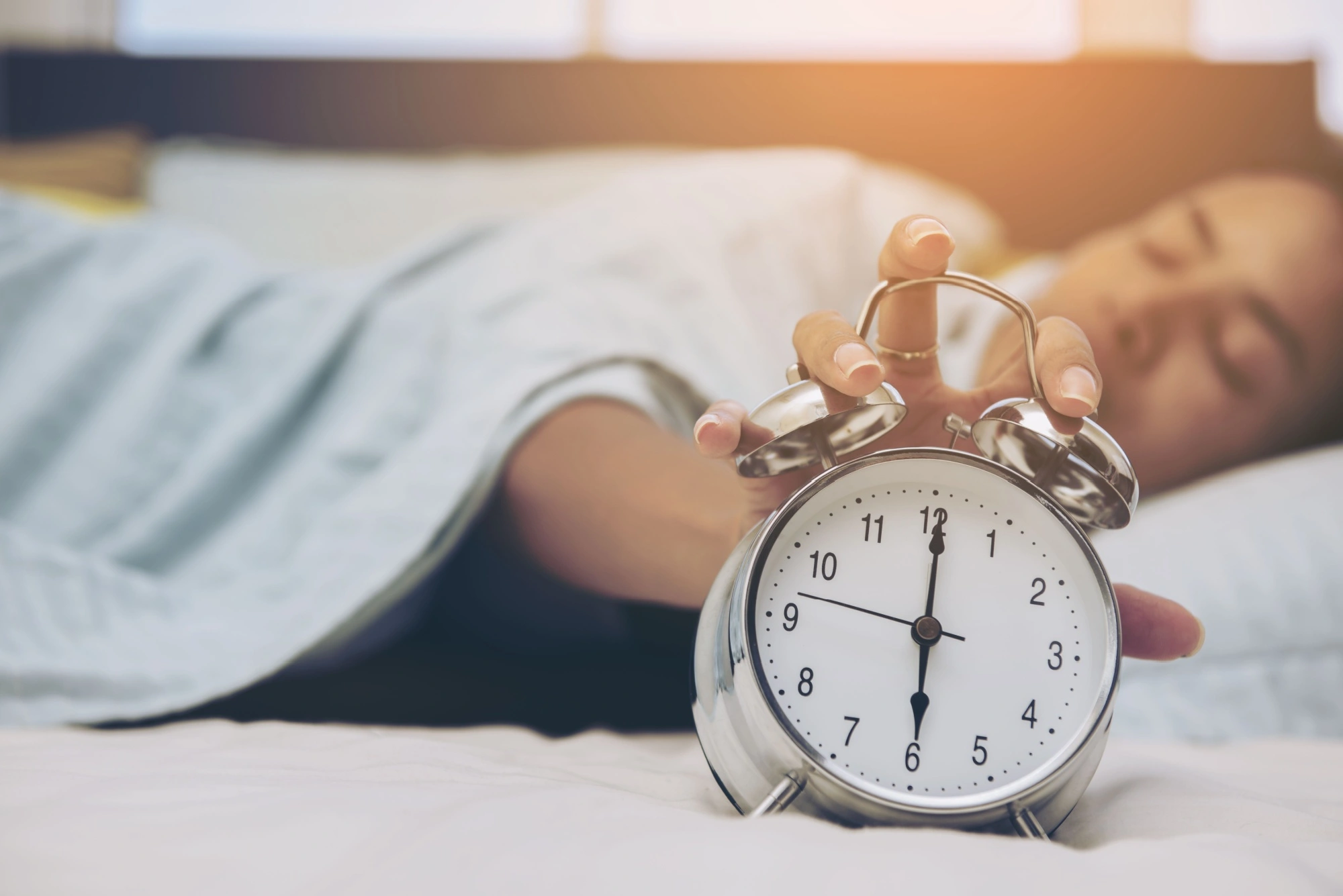GET MORE FROM YOUR MATTRESS
(AND YOUR MONEY)
Sign up for Email Updates!
- Discounts
- Tips
- Latest News
- New Products
April 23, 2024 · 8 min read
Share post on:

Although adjusting to daylight savings time can be a difficult feat for all of us, something about losing an hour of sleep due to daylight savings in spring (also known as “spring forward”) seems to throw many of us off of our game. While the extra daylight may be a nice way to start and end the day, the transition can disrupt our sleep patterns and leave us feeling groggy and fatigued.
If you, like many of us, are struggling to understand how to adjust to daylight savings, we’ve got some helpful tips that will make going to sleep and waking up all the easier.
Here are easy tips for adjusting to daylight savings time:
If you feel inconvenienced by daylight savings or spring forward, believe us when we say that you are not alone. The annoying time changes that happen twice a year seem fruitless to many of us, so what’s the point of it? Well, time for a little history lesson.
Daylight savings time (DST) was originally introduced by Benjamin Franklin (yup, that Ben Franklin) as a way to make better use of daylight during spring and summer as a way to conserve energy. By moving the clocks forward in spring, we can maximize daylight hours in the evening, which theoretically reduces the need to turn on lights in our homes and rely on natural light. This practice was implemented during the First and Second World Wars.
Although we can all agree that energy conservation is good and green, it disrupts our body’s internal clock (circadian rhythm) and as a result, our daily routines. Losing or gaining an hour of sleep when we’re not prepared for it can have negative effects on our bodies and wellness. It can take time for our bodies to adjust to the new schedule, leaving us feeling tired and groggy for a while, especially if we weren’t prepared for it. Not to mention that time changes can often feel just plain disorienting.
Most people need about five days to a week to fully adjust to the time change. Until then, you might feel like you have jet lag for a little while. This range can vary from person to person depending on sleep sensitivity, sleep habits, and daily routines. Try to be patient with yourself and follow these tips for adjusting to daylight savings time to ensure a smoother transition.

Find Your Perfect Mattress Match
Gaining or losing an hour of sleep makes keeping a consistent sleep schedule all the more important. Because daylight savings time messes with our circadian rhythm, adjusting our sleep schedule to adapt to the time change can help us feel more well-rested overall. Adjusting your bedtime to either be an hour earlier or later depending on the time change can help you get the full 7-9 hours of sleep that your body needs to function.
Once you have gotten into a good routine, be sure to go to bed and wake up at the same time every day to reset your internal clock. This way, your body will be able to tell you when it’s time to go to bed and wake up at the appropriate times.
Keep reading: How much sleep do I really need?
Light is one of the body’s most influential stimulants and can affect your body’s ability to feel tired or awake. If you want to regulate your circadian rhythm during daylight savings in spring, exposing yourself to bright lights in the morning can help you feel more awake. This will increase if you spend some time in the sun for an exhilarating dose of vitamin D! On the flip side, try to dim the lights in your home earlier in the evening to signal your body that it’s time to wind down. Keeping lights on or blue light exposure will keep your brain alert, making it harder for you to fall asleep.
In our blog discussing the relationship between sleep and exercise, we point out that exercise helps to regulate your circadian rhythm and decrease feelings of daytime sleepiness. If you are having issues adjusting to daylight savings time, try working out in the morning. Morning workouts can help wake you up and beat that post-time change fatigue. On that same note, you should avoid vigorous workouts late in the evening as they can raise body temperature and interfere with your ability to fall asleep.
On top of tweaking your bedtime and exercise times, an interesting tip for adjusting to daylight savings time is to move up your dinner time. Eating earlier in the night — at least 3-4 hours before going to bed — gives your body enough time to digest your meal so that you don’t get to bed feeling too full. Ingesting a heavy meal or indulging in spicy food too close to bedtime can cause sleep disruptions that make adjusting to daylight savings time all the more difficult.
If you’re waking up exhausted after daylight savings time, you need to prioritize going to bed at a reasonable hour. A great way to get into this habit is to create a cozy and de-stressing bedtime routine.
Whether it’s taking a warm bath, reading a book, meditating, or doing some nice stretches, creating a relaxing bedtime routine is the best way to tell your body that it is time to unwind. Those who establish a nightly routine that prioritizes relaxation and calmness are more likely to fall asleep faster and stay asleep longer. Your bedtime rituals or procedures can include whatever works best for you, just try to avoid technology or other stimulants that may keep you alert.
Some pleasures in life can, unfortunately, really mess with our sleep patterns, especially during daylight savings time — namely coffee before bed and technology use. Stimulants such as caffeine and blue light exposure can delay your body’s production of melatonin, a hormone that regulates sleep. Without the regular production of melatonin, you will have trouble falling and staying asleep, leading to fatigue and even sleep deprivation.
You should avoid any caffeinated beverages, including coffee, for at least six hours before bedtime and avoid any electronics (smartphones, tablets, and computers) for at least two hours before bedtime to ensure a good night’s sleep. Instead, make yourself a cup of hot, caffeine-free, calming tea and grab a good book to get your fix of comfort and entertainment without disrupting your sleep cycle.
Although it didn’t make the list of tips, adjusting to daylight savings time is much easier when you’re sleeping on the right mattress. Aside from the obvious time change, many sleepers still struggle with tossing and turning, snoring, insomnia, or other sleep disturbances that result in low-quality sleep. However, with the right mattress, you can fall asleep faster and stay asleep longer with fewer interruptions to get the restorative rest that your body needs.
If you’re still struggling with daytime sleepiness and overall fatigue from daylight savings time, you’re not alone — but it is possible that your current mattress could be to blame. If you’re not waking up feeling refreshed every morning, your sleep quality is probably low.
If you’re tired of feeling tired, it’s time for a change. Upgrade your mattress to a high-quality bed from Texas Mattress Makers. Visit any of our mattress stores in Katy, Downtown Houston, The Woodlands, Rosenberg, Humble, or Baybrook, TX, or shop online to get the best mattress for the best price.
More Helpful Articles by Texas Mattress Makers:
Share post on:
Share on:

Get More From Your Mattress (and your money)



GET MORE FROM YOUR MATTRESS
(AND YOUR MONEY)